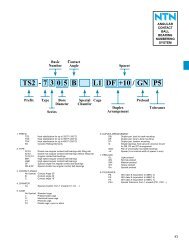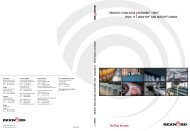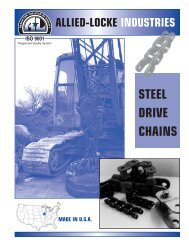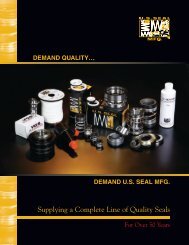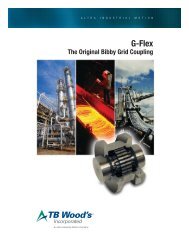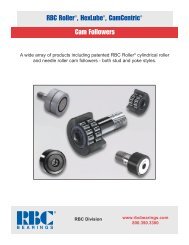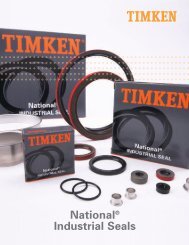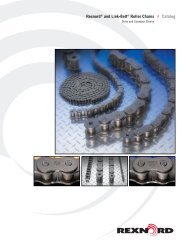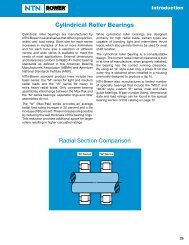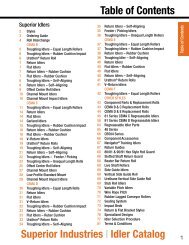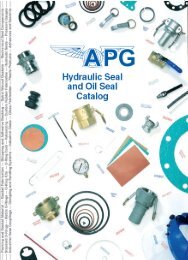Sprocket Catalog - U.S. Tsubaki, Inc.
Sprocket Catalog - U.S. Tsubaki, Inc.
Sprocket Catalog - U.S. Tsubaki, Inc.
Create successful ePaper yourself
Turn your PDF publications into a flip-book with our unique Google optimized e-Paper software.
<strong>Sprocket</strong> Engineering Information<br />
<strong>Sprocket</strong> Terminology<br />
<strong>Sprocket</strong> Hardening<br />
<strong>Sprocket</strong> Tooth Dimensions<br />
<strong>Sprocket</strong> Formulas & Standard Keyways<br />
<strong>Sprocket</strong> Pitch Diameter Constants<br />
Speed Ratios<br />
<strong>Sprocket</strong> Diameters<br />
<strong>Sprocket</strong><br />
Terminology<br />
Hub Type<br />
Hub type refers to the core of the sprocket. Each of the three standard<br />
hub types is designed for a specific need.<br />
• Type A has no hub extension and must be mounted on a<br />
flange, hub, or other holding device.<br />
• Type B has a hub extension on one side and is usually found<br />
on small or medium-size sprockets.<br />
• Type C has hub extensions on both sides and is usually found<br />
on large-diameter sprockets.<br />
Number of Teeth<br />
The number of teeth on a sprocket is determined by chain pitch and<br />
size. Larger sprockets, which have more teeth, generally last longer<br />
than smaller sprockets because wearing action is distributed over a<br />
greater area. Double-pitch sprockets, which have two teeth per chain<br />
pitch, also obtain longer wear life because only half the teeth engage<br />
with the chain per revolution. An odd number of teeth will engage<br />
with the chain only every other revolution, essentially doubling<br />
sprocket life. Periodically advance one tooth to obtain the same effect<br />
on double-pitch sprockets with an even tooth count.<br />
Maximum Bore Diameter<br />
The bore must be large enough to accommodate the shaft while<br />
maintaining sufficient hub wall thickness for proper strength.<br />
Length Thru Bore (LTB)<br />
Length thru bore, or hub thickness, must accommodate a keyway<br />
long enough to withstand shear stress from the shaft.<br />
Pitch Diameter<br />
The diameter of the pitch circle that passes through the center of the<br />
pin as the chain engages with the sprocket.<br />
Outside Diameter<br />
The diameter measured from the tip of one sprocket tooth directly<br />
across to the tip of the corresponding sprocket tooth.<br />
Bottom Diameter<br />
The diameter measured from the seating curve at the bottom of one<br />
sprocket tooth space directly across to the seating curve at the bottom<br />
of the corresponding sprocket tooth space.<br />
Caliper Diameter<br />
For sprockets with an odd number of teeth, measured from the seating<br />
curve at the bottom of one sprocket tooth space across to the seating<br />
curve at the bottom of the sprocket tooth space nearly opposite.<br />
TYPE A TYPE B TYPE C<br />
75




